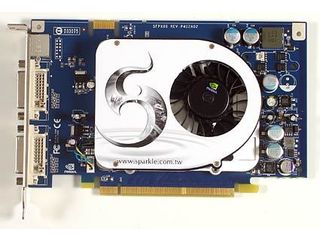GeForce 8600: DirectX 10 For The Masses
PureVideo 2

The second change to the primary architecture for in G84 and G86 was to the video decoding component. The GeForce 7 series processors included functionality for standard definition WMV9, MPEG-2, VC-1 and H.264 decoding. Late GeForce 7 and the GeForce 8 added a SIMD vector processor, motion estimation engine, and HD video decoder that accelerated decoding and image quality for high-definition video for the same formats. While there was added functionality, other components such as bitstream processing and inverse transform were still handled by the CPU.
The latest version of PureVideo is much more than the original SIMD. A bitstream processor was added to handle Context Adaptive Variable Length Coding (CAVLC) and Context Adaptive Binary Arithmetic Coding (CABAC) H.264 decoding. An AES128 engine was added to accelerate the decryption to meet the requirements of content controls for media players and operating systems. These new features added into the graphics processor mean that there should be a decrease the amount of processing sent to the CPU.
Testing Limitations

While we would have liked to have tested all of the features of the new graphics cards being unveiled today, there were several factors that forced us to shorten the depth of testing for this preliminary article. The first was a delayed driver. Nvidia did not have a functioning Vista driver due to an installation programming problem. For some reason they delayed the fully functioning Windows XP driver until a solution for the Vista drivers was found, documented and a fix was supplied. These drivers were supplied to reviewers on Thursday of last week but the hardware was not delivered to us until Saturday. The story is that product was shipped to some undisclosed local and had to be rerouted to out test lab. These plus a late delivery on several details about this new hardware made it difficult to fully evaluate this product in the fashion you, our readers deserve.
That being said, we fully plan to test many claims made by Nvidia about CPU utilization and video playback under the latest PureVideo package. We also intend to test the image quality of the playback using the HQV suite. Lastly we intend to determine the performance of the G86 based GeForce 8500 GT which has yet to reach our labs. It is also our aim, as we stated earlier to see if we can see the true impact of the doubling made to the texture addressing process. We were able to run some game testing but did not have time to run a full comparison to peer cards of the same price and performance levels. We plan on having a subsequent article to follow this within the next seven to ten days.
Stay on the Cutting Edge
Join the experts who read Tom's Hardware for the inside track on enthusiast PC tech news — and have for over 25 years. We'll send breaking news and in-depth reviews of CPUs, GPUs, AI, maker hardware and more straight to your inbox.
Most Popular


